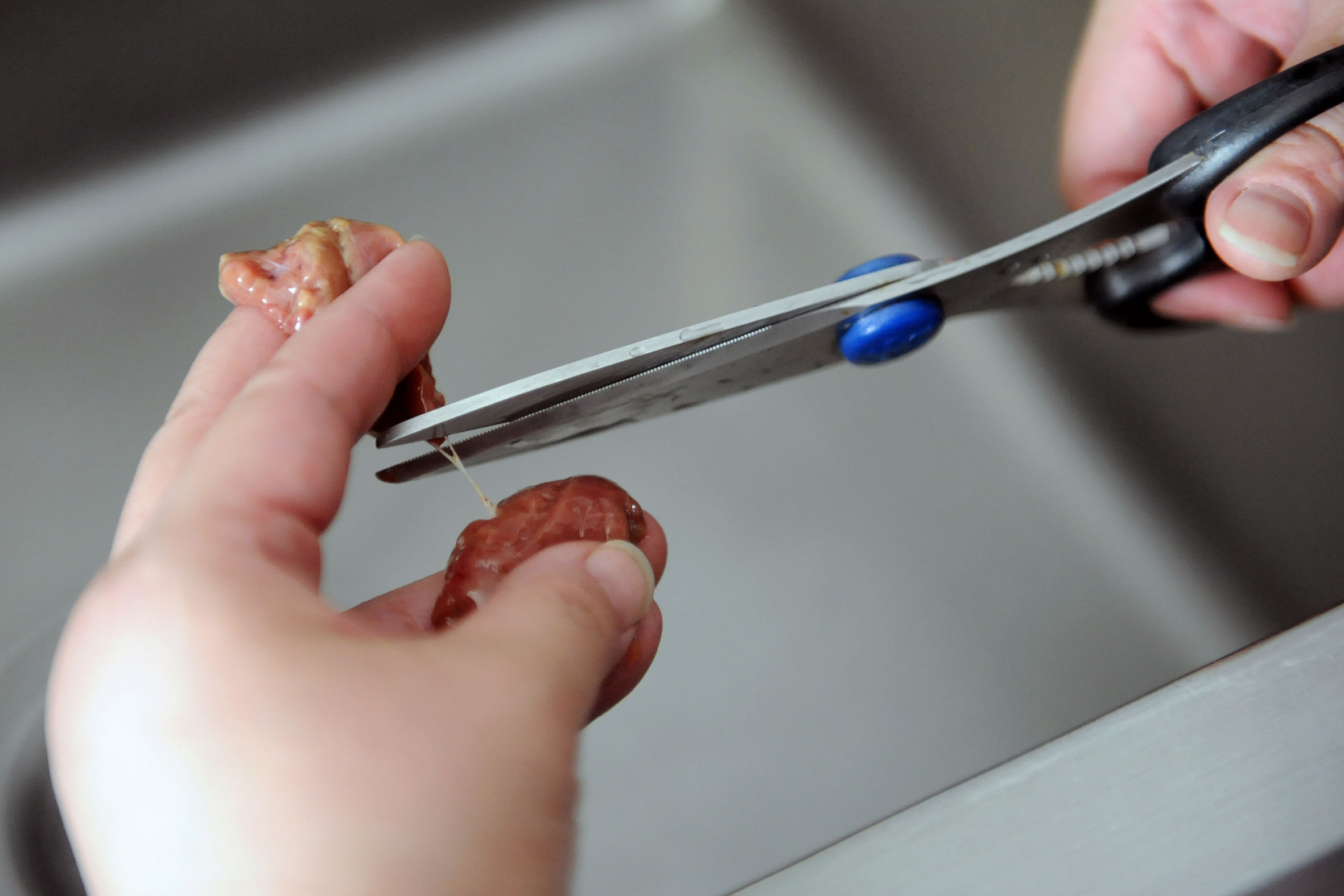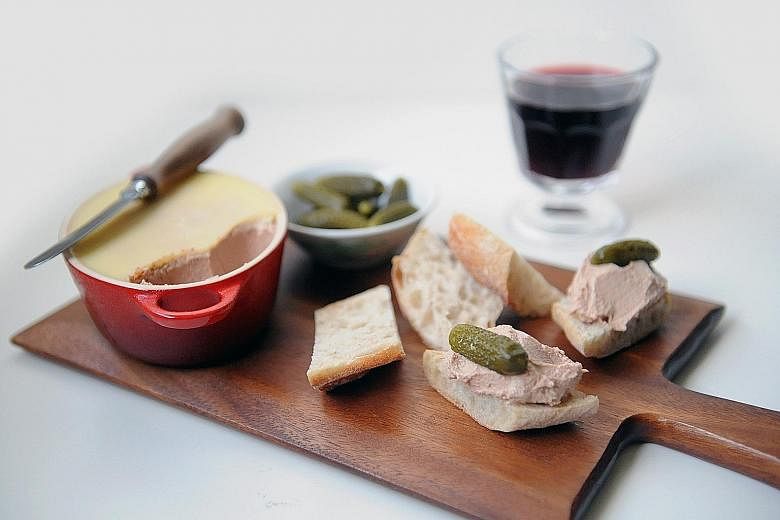I know that asking cooks to make one more thing from scratch for Christmas is pushing it, but if you are celebrating over several days, there might be time to make an easy chicken liver pate.
It is good with a glass of wine or two before lunch or dinner, or as a snack in between.
The pate recipe will also come in handy for a New Year's Eve party, by which time everyone is tired of turkey and ham and looking for other rich and festive treats.
What I like about this recipe is that while it tastes luxurious, it is also cheap to make. If you buy from a chicken stall in a wet market regularly, it might even throw in livers for free. Even if you have to pay for them, you will probably not have to spend more than $5.
They are often sold with chicken hearts, but those have the wrong texture for pate.
If the place you buy the livers from sells them with the hearts, then buy a little more. Discard the hearts; or trim off the fat, rinse and drain well, skewer and grill them for a quick and delicious cook's snack. A sprinkling of sansho pepper makes them even better.
But for pate, all you want are the livers only, and butter, whipping cream, cognac (dig out the bottles from duty-free shops) plus milk, apart from salt and pepper.
The butter and whipping cream make the pate rich and silky and the cognac adds flavour and makes it taste festive.
What is the milk for, you ask.
I once had a homemade chicken liver pate that left me stunned because it was unrelentingly bitter. After doing a bit of digging on the Internet, I found out that soaking livers in milk is one way of getting rid of the bitterness.
Since I have never made a bitter chicken liver pate, I will continue to soak the livers in milk. If you would rather skip this step - there are just as many websites that say there is no need - I cannot stop you.
The washing, trimming and soaking of the livers would be in vain if they are overcooked.
Get the pan good and hot and then cook them for about a minute on each side. The outsides should be a light brown and the livers a light pink inside. Overcooked liver will make a gritty, nasty pate.
It is important not to crowd the pan or the livers will simply steam in the butter and not brown. Cook them in batches.
After all that, the pate comes together in the food processor and is then left to chill until it firms up. A thin layer of melted butter on top stops the pate from oxidising and drying up in the refrigerator.
I love pate with tart cornichons because sour pickles with rich pate is a beautiful contrast. Pickled onions or those addictive pickled shallots from Japan are also good. Whatever you serve it with, just make sure it is tart.
Warm slices of baguette or water crackers make good landing spots for the pate. Crackers are less filling, which means you can have more pate, which is never a bad thing.
I make this every time I feel like celebrating. It has been an interesting year, being equal parts good, bad and crazy.
But I have survived. And that is reason enough to celebrate.
MAKE IT YOURSELF: CHICKEN LIVER PATE
INGREDIENTS
500g chicken livers
Full-fat milk
150g softened butter
50ml cognac
100ml whipping cream
Salt and freshly cracked black pepper to taste
Melted butter
METHOD:
1. Place the chicken livers in a colander and rinse under running water. You want only livers for this recipe. They are sometimes sold with the hearts, so buy about 650g of the combination if the stall or supermarket sells them that way. Discard the hearts or trim the fat off them and grill for another dish.

2. Trim the livers with a pair of kitchen shears (picture), removing any veins, greenish spots, fat and connective tissue. Rinse them again, drain and place in a large bowl. Pour in enough milk to submerge the livers fully. Let sit at room temperature for about 45 minutes. This removes any bitterness.
3. After 30 minutes, drain the livers in a colander and shake to remove as much remaining milk as possible.
4. Heat 50g of the softened butter in a frying pan over medium-high heat. Cook the livers in the pan until they are lightly browned on the outside and light pink inside, about one minute on each side. Cut into one liver to check. Do not overcook and do not crowd the pan or they will not brown. Cook the livers in batches, transferring the cooked ones to a plate.
5. When the last batch of livers is ready, pour the cognac into the pan and let the alcohol burn off.
6. Transfer all the livers and any pan juices into a food processor. Add the remaining 100g of softened butter and the whipping cream. Process until you get a very smooth, slightly pink paste. Add salt and pepper to taste and give the mixture one last whizz.
7. Place a fine metal sieve over a medium mixing bowl. Strain the liver mixture through the sieve with a spatula. Discard all the solids that remain in the sieve. Do not forget to scrape the mixture that collects under the sieve into the bowl.
8. Ladle the mousse into ramekins, leaving some room at the top for a layer of butter. Place in the refrigerator for 25 to 30 minutes.
9. In the meantime, melt some butter. How much you need will depend on how many ramekins you have used.
10. After the 30 minutes are up, remove the ramekins from the refrigerator. Carefully spoon enough melted butter over the top of each ramekin to cover the surface completely. Refrigerate for about 30 minutes until the butter has firmed up. Cover with foil or Cling Wrap and refrigerate overnight. Serve with a warm baguette and cornichons.
Makes about 600g of pate, serves 10 to 12


